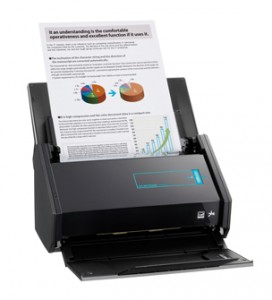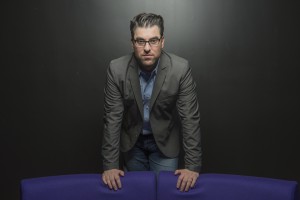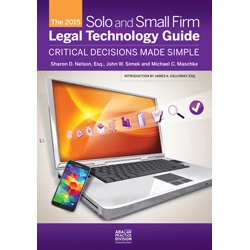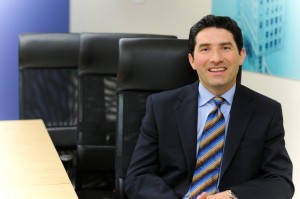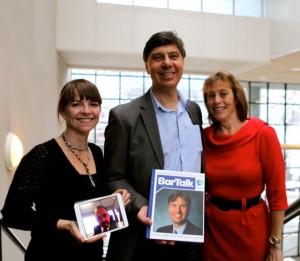♫ Snap, what a happy sound
Snap is the happiest sound I’ve found
You may clap, rap, tap, slap but
Snap… makes the world go round…♫
Lyrics and music by Moosebutter.
Continuing with the theme of technology that just works, I would be remiss if I didn’t mention the Fujitsu ScanSnap iX500.
This little scanner punches way above its weight. In fact in the years that I have been talking about scanners and going paperless, no one has ever said that they have regretted purchasing one of the ScanSnap line of scanners. They have been a hit with every size firm, with every practice area and every type of lawyer right across North America. Why? They do their job simply, quietly, quickly and very efficiently.
What do they do? Here are the specs:
- 50 page automatic sheet feeder
- full duplex scan
- 25 pages per minute in full colour, faster in B&W
- works with Windows and Mac computers (I use mine with my MacBook Pro)
- works with Android and iOS mobile devices and tablets
- comes bundled with Adobe Acrobat Standard (for Windows PCs only, regrettably for us Mac users) as well as other bundled software
- comes with a ‘carrier sheet’ – a dual layer clear plastic sheet that allows you to scan loose papers and receipts
- can be set to OCR (optical character recognition) files automatically
- detects colour, greyscale and black & white
- you can create a PDF, text-searchable PDF or JPEG file
- using Wi-Fi, you can scan directly to a personal computer, iPhone, iPad or Android device
- if you wish, you can scan directly to your existing Evernote, Dropbox, Google Docs, SugarSync and Salesforce accounts
The ScanSnap iX500 comes with a set of bundled software:
- ScanSnap Manager (Windows and Mac)
- ScanSnap Organizer (Windows)
- ABBYY FineReader for ScanSnap (Windows and Mac)
- Adobe Acrobat X standard (Windows)
- PFU CardMinder (Windows and Mac)
- Rack2-Filer Smart and Magic Desktop (Windows) – Available only with iX500 Deluxe
- ScanSnap Folder (Windows)
- Scan to SharePoint (Windows)
- Scan to Mobile (Windows and Mac)
Full specifications can be found here and system requirements here.
I have a ScanSnap at home and love it. It has allowed me to take my paper files and digitalize them and eliminate the need for paper files. I also upload my documents into Dropbox and this allows me to have a full cloud-copy as well as a local copy of all my documents. Have a hard drive failure? No worries…get a new PC or Windows, link it to your Dropbox account and ZIP…your documents are now dowloaded on your local computer. I know ..I experienced this. Everything in my Dropbox account was quickly and easily recovered notwithstanding the HD crash (unfortunately I found out to my regret that my photos..that I thought were backed up in iCloud ..were not. Now all my photos are backed up in Dropbox). For important documents and folders, I use third party encryption that creates encrypted volumes within Dropbox for security.
In my world, Snap makes the world go round.
(published concurrently on tips.slaw.ca)
♫ He ain’t no drag
He’s got a brand new bag… ♫
Lyrics, music and recorded by: James Brown.
This post continues the ‘no brainer’ posts about technology. This time it is about a bit of technology that most people don’t put much thought into, I suspect, namely their computer laptop bag.
Now some people will say that a bag is a bag is a bag. I am not one of them. In fact I can say that I am quite particular about my bag. I had a nice laptop bag given to me by our local Continuing Legal Education provider for being a volunteer that fit the bill nicely, but when it finally wore out after many years of hard use, I started looking for a replacement.
I first settled on an Eagle Creek bag – the “Strictly Business” carryall. Prior to this purchase I had had a number of bags from Eagle Creek of various sorts and liked them all. However, I discovered that the handles on the Strictly Business were too long…the bag almost dragged on the ground when carried by the handles rather than the shoulder strap- and I am a fellow who is 6’2″ tall.
But when the zipper blew after only 6 months of owning the bag, I went in search of an alternative bag.
What are the features that one looks for in a laptop bag? To me the important features are:
- Size: Look for a nice padded internal compartment for the laptop that is well-padded and once inside, won’t allow the laptop to slide around much. The compartment should be wide enough to take your laptop without a lot of extra room. The standard is to fit a 15″ laptop…if your laptop is bigger or smaller you may want to consider a larger or smaller bag.
- Durable construction. The bag that I received from CLE-BC lasted years of heavy use. That was my measure of durability. Look for good padding, stout seams and good hardware, especially the zippers. If you live in an area of significant rainfall or other harsh weather, ensure that the laptop will stay clean and dry inside. I prefer a soft-sided laptop bag but some may prefer a harder case. Personal preference. Velcro should close easily and be secure. Magnetic fastenings should stay closed. Seams should be well-sewn.
- Style: You are going to be taking this laptop bag to business meetings, on airplanes, checking into hotels and generally having it with you most days. Accordingly the bag should match your style.
- Weight: Leather may be a good choice in terms of durability and style; personally while I like the look and feel of a great leather bag, weight was also a consideration. I carry a great deal of ‘stuff’ and the extra weight of a leather bag was too much for me since I walk to and from the office. Accordingly, a fabric bag that is largely waterproof is high on my list of requirements.
- Size: As I mentioned, I carry a lot of ‘stuff’ from the laptop power cord to various other cords, papers, USB drives, my chequebook etc…so I want a bag that has lots of compartments, pockets, internal zipped pouches etc to organize things such as your cell phone, business cards, pens, a chocolate bar or two, your wallet and passport and even your toothbrush and toothpaste. Ensure that your laptop bag meets the new restricted size limits if you plan to use it on airplanes.
- Color: I am not referring to the color of the outside of the bag…that is a matter of personal preference. But the new bag that I acquired..the Solo Urban 17.3″ Ultracase, while black (with orange trim) on the outside is bright orange on the inside. If you are accustomed to ferreting around trying to find something inside a black bag you will totally appreciate the difference a bright orange lining makes. Finding something is now effortless. Plus the bag is perhaps one of the sharpest I have seen for looks. It it is a joy to carry and easily organizes and stores all my ‘stuff’.
A laptop bag can be one of the most important overlooked items in your business life. When it works well it is practically invisible since it performs its duties effortlessly and in a way that matches your lifestyle. I am quite pleased with my Solo Urban Ultracase…Daddy’s got a brand new bag!!!
(published concurrently on tips.slaw.ca)
♫ To boldly go where no one has gone before…♫
Narration to the music by Alexander Courage.
In Chicago for ABA TECHSHOW I heard a presentation to my fellow Practice Management Advisors from Daniel Martin Katz on the future of law and legal eduction. Daniel’s thesis, as I understood it, is that law schools should no longer be liberal arts oriented. Rather they should be Polytechnic Law Schools. The reason for this change is that the future of lawyers is to combine analytics (i.e. computer reasoning) with a lawyer to produce better outcomes. And you can’t apply something that you really don’t understand. Lawyers need to have a solid grounding in legal technology, analytics and computer modelling to be better lawyers.
For example:
According to Daniel Katz, an associate professor of law at Michigan State University, computer modeling has proven “able to predict 70 to 75 percent of the cases correctly” in a given year. That compares to a 60 percent rating for legal experts who also predict outcomes.
We all know that IBM is working on Watson, which is “a cognitive system that enables a new partnership between people and computers that enhances and scales human expertise.”
But what you may not know is that IBM’s Watson is not alone. Microsoft and Amazon are undertaking similar research. Pretty soon every Tom, Bill and Jeff will have their own in-house cognitive learning system.
Furthering these ideas will be an exciting event held in conjunction with ABA TECHSHOW:
There will be a Legal Technology and Innovation Meet-up at Sadden Arps being held concurrently during TECHSHOW week. I expect to hear mind-expanding ideas from such speakers as:
- Jeffrey Carr, former GC at FMC Technologies (and one of the innovators in alternative billing systems for lawyers),
- Casey Flaherty, former in-house counsel (Kia Motors America) and creator of the Legal Technology Audit who will be speaking on: A Piece in the Metrics Puzzle: How Well do we Utilize Technology to Deliver Value and Quality?
- Ron Dolin, of the Stanford Center on the Legal Profession, legal technology consultant and investor and legal technology and informatics instructor speaking on The Importance of Measuring Quality
and many others.
Daniel is not alone in thinking that information technology is changing the face of law. Human enterprise and machine learning is taking the legal profession where no one has gone before.
♫ I’m gonna kick tomorrow
I’m gonna kick tomorrow…♫
Lyrics and Music by Eric Avery, Perry Farrell, recorded by Jane’s Addiction.

This is a guest post from an anonymous author that was published in the March 2015 Newsletter In Sight by the Oregon Attorney Assistance Program. It is reprinted here with the kind permission of OAAP and the author. The most powerful messages are personal ones and this one struck a nerve. It takes a special kind of honesty to face up to a personal issue, look at it critically in the harsh reality of day and eventually stare it down through personal strength and persistence. I hope it resonates with you.
I could start my story about my addiction to prescription drugs with the day I was fired from my job. Or I could begin with the day several months later when the clerk at the posh store where I was shopping called the police because she thought I was too impaired to drive. Or should I begin with the worst day – the day my husband told me if I didn’t go to rehab, he would take my 12-year-old daughter and leave?
My addiction was fueled by physical pain and fear of pain. The event that sticks out in my mind as “the beginning” is struggling in pain through a client’s daylong deposition. An MRI two days later showed I had a herniated cervical disk. Neurosurgeons recommended I get a fusion immediately due to spinal cord compression, but I waited for six months because of fear and uncertainty. The cloud of pain and anxiety that descended over me was ripe for addiction. I catastrophized – and started taking prescription Vicodin. At first I took it only occasionally, as needed, but soon it seemed like I needed it three times a day, every day, like clockwork.
The spinal fusion surgery I eventually underwent did not seem to stop the pain. The surgeon theorized that the injury had been there so long that a pain pathway had been established. Even though the offending disk was repaired, the tissues and nerves were still sending pain signals. The neurosurgeon referred me to a pain specialist.
My experience under the care of a “pain specialist” was the beginning of a nightmare roller-coaster ride. I became trapped in a web of prescriptions, appointments, and tests. I felt chained to the doctor and the pharmacy. The doctor put me on a permanent narcotics maintenance program. Soon I graduated from Vicodin to Percocet, and then to Morphine, Oxycontin, and Fentanyl. When I became depressed, they added an antidepressant. When I couldn’t sleep, they added Ambien. Every morning I had to take an antinausea drug to keep it all down. The doctor told me I should accept that I would be on medications for the rest of my life. I felt I had two terrible choices – addiction or constant pain.
I kept trying to work, but I constantly felt sick, tired, and depressed. I imagined I had a giant raptor perched on my back, its claws embedded in my shoulder blades. Sometimes I shut the door for a few moments and lay on the floor, praying for the physical and emotional pain to go away. I was frequently late to work and used all my sick time. I became increasingly fragile, and I could not handle any criticism. I was deeply ashamed, and at the same time I blamed everyone else for my problems.
I tried to care for my 12-year-old daughter, my husband, and my 80-year-old mother, but I had nothing left for them. After work I would come home and lay on the couch. Usually, I would fall asleep there. My daughter didn’t invite friends over for a year. I felt like an embarrassment to my family. I thought I was a terrible mother, wife, daughter, friend, and employee. I wanted to disappear.
At some point I started abusing the medications. I would take too much and run out before my prescription was due. Many months I made up excuses about why I needed to fill the prescriptions early. I would wait for the hour, the minute, my prescriptions could be filled, and would rush to the pharmacy to pick them up. The anxiety and shame created by dependence on narcotics were crippling.
One Saturday I woke up in the hospital. The doctor said I had overdosed and was down to three or four respirations per minute. That afternoon my husband called a treatment center and arranged for my 30-day in-patient admission. I did not want to go, but I had hit bottom. Of all the terrible choices I had, treatment seemed like the least horrible option.
Of course, the first few days of treatment were tough. The back pain initially increased, but not as much as I feared it would. I couldn’t sleep for a few days, and the anxiety from withdrawal was very uncomfortable. But I was in the company of people going through the same thing, and that helped a lot. It also helped that I was free to collapse, cry, and sweat without fear of disappointing anyone. I no longer had to pretend everything was okay. It took a lot of energy to keep everything going when I was addicted to painkillers, but finally I could just stop and let all the balls in the air crash to the floor. There were a lot of things I disliked about treatment, but it saved my life, my family, and my career.
Within a couple of days, I was grateful that my husband had given me the ultimatum that forced me into treatment. At first, he held me at arm’s length and did not promise that he would be there when I got out. My daughter also kept her distance. I was so sorry for all the pain I had caused them, but I tried to be hopeful they would trust me again.
I was placed in the chronic pain group, and we read a book that argued that pain and suffering are two separate things. Maybe you can’t control the pain, but you can control your response to it. That concept was revolutionary to me. For the first time, I recognized that I was not actually trapped and that I did have choices. Instead of worrying that the pain was only going to get worse, I chose to think it would get better. This choice helped me break the cycle of pain – fear – pain – fear. When I assumed the pain was temporary, I was able to ignore it and think about something else. My shoulders relaxed, and the pain decreased. Within a couple of weeks, I could go for hours without thinking about pain. I began to apply this newfound power to choose my thoughts to other areas of my life. If I woke in the middle of the night, instead of darkness, I chose a more positive option from the thought menu. It was liberating to learn that I could choose what I spent my time thinking about.
Also key were the daily lectures about addiction and neurochemistry from scientists and doctors. I learned that drugs and alcohol alter the brain’s neurochemistry and inhibit the body’s natural ability to respond to pain and stress. I learned that if I could hold on long enough to get the chemicals out of my system, my own endorphins, serotonin, and dopamine would kick in. Eventually I found out that my own body handled pain as well as or better than narcotics had.
I accepted, and eventually embraced, the idea that in order to be healthy and sane, I had to completely eliminate narcotics and other addictive substances from my life. Instead of wondering if I am having too much, I simply have none. I followed the recommendations of my support group, and I tried to apply the principles in all my affairs. I also started making healthier choices in other areas of my life – I started jogging again and changed my diet.
Today I have been clean and sober for more than seven years. My life is so much easier to manage. I am responsible, organized, and reliable. If I say I am going to be somewhere or do something, I do it! I don’t have to worry that I may feel too sick or that I will forget. I have my old job back, and I have regained the trust of my husband, daughter, friends, and coworkers. I am nearly pain-free, except for normal temporary aches and pains. I practice choosing how I respond to situations and people, and I try to take responsibility for my own emotions. Fortunately, the legal profession and life in general provide many opportunities to practice. Sometimes I do not succeed at first, but I keep trying and eventually I can steer my thoughts in a positive direction.
I regularly attend community support meetings to maintain my sobriety. I welcome the authenticity that I find in these meetings. People talk about real things in a genuine way. It is refreshing to connect with people in this way. It is comforting to know that anything I say or feel is acceptable and will be understood. And it is good to see newcomers, have the opportunity to share my experiences, and be grateful for how far I have come.
Choosing Positive Thoughts
Thank you to the author, Barbara Fishleader and the others at the OAAP for sharing this story of how all of us can kick tomorrow.
♫ What’s left to lose?
I painted all these pictures but you couldn’t choose,
All of your company.
But is this distance, calling my name?
I think persistence is this price that we pay in the end…♫
Lyrics, music and recorded by State Champs.
This is an image taken from a YouTube marketing video created by a Pittsburgh lawyer named Daniel Muessig. This particular video has been described as “clever, effective, legally ethical and thoroughly despicable” by ethicsalarms.com. They state:
Is this an ethical ad? According to the Pennsylvania Rules of Professional Conduct, it is within the conduct permitted by the state’s legal ethics rules. The ad isn’t misleading. It doesn’t make promises the lawyer cannot keep. It doesn’t represent dramatic recreations as fact, or use broad metaphors and exaggerations. (Lawyer ads are held to a standard of literalness that presumes the public has never see any other kinds of advertising in their entire lives.) Once upon a time the various state bar advertising regulations included prohibitions on “undignified” communications, or those that undermined public trust in the profession, but those days are long past: the standards were necessarily vague, and breached free speech principles.
So we have this: a lawyer who appeals to his future criminal clients by saying that he thinks like a criminal, believes laws are arbitrary, that other lawyers will “blow them off” and that he visits jails frequently because that’s where his friends are. He attacks his own colleagues and profession, denigrates the rule of law he is sworn to uphold, and seeks the trust of criminals not because of his duty as a professional, but because he’s just like them. Muessig is willing to undermine the law-abiding public’s belief in the justice system and the reputation of his profession and his colleagues in order to acquire clients. I’m sure his strategy will work, too.
This YouTube video has received over 282,000 hits at the time of writing this column.
Daniel Muessig has no disciplinary history according to my colleague Nancy Carruthers, of the Law Society of Alberta, who incorporated this into her paper “Ethics and the Business of Law” and displayed the full video to The Business of Law conference by the Legal Education Society of Alberta where I am honoured to be a speaker.
What do you think? Is is over the top and beyond the bounds of ethically allowed marketing by lawyers in Canada? It is certainly creative and ‘in your face’ as Nancy has noted in her paper/presentation. Is it a sign of lawyers engaging in advertising that while undoubtedly effective and distasteful to some, is too close (or perhaps even over) the ethical line? Or is it a sign of lawyers saying, when it comes to the legal battlefield, what’s left to lose?
–Cross-posted to tips.slaw.ca.
♫ Here’s to me, I finally passed the Bar…♫
Music and Lyrics by M. Peterson, M. Puryear, B. Brock and recorded by: Michael Peterson.
Joe Public had a problem. He was off to court in a week and he needed to learn what arguments he should advance to persuade the judge in his favour.
He contemplated heading to a lawyer’s office but instead he signed onto the website IBMLaw.com. A few minutes later he was answering questions put to him by the software. Shortly thereafter he printed up the arguments that had been produced for him by the website and whistled to himself, as he was now prepared for court, armed not only with the arguments he would be advancing but also the ones that he could expect to be advanced against him – with prepared responses.
Sound farfetched? Science fiction? Contemplate this: In June of 2014 Robert Weber, the senior vice president and general counsel of International Business Machines Corp. went to San Jose, California to watch a demonstration of the Watson Debater, according to The American Lawyer.
Weber watched Watson debate whether watching violent video games predisposes young males to be more aggressive. It didn’t just come up with answers to questions as an earlier version did winning on Jeopardy. Now it synthesized information to develop arguments on different sides of an issue.
Indeed, if you go to IBM.com you will find: “Watson is everywhere. Watson has been learning the language of professions and is trained by experts to work across many different industries.”.
Backed by the IBM Watson Group, 2000 employees and $1 billion in funding, Watson is but one of a growing number of ventures seeking to change the delivery of legal services.
IBM says: “Meet IBM Watson, a cognitive system that enables a new partnership between people and computers that enhances and scales human expertise.”
Many people believe that lawyers cannot be replaced by machines as the type of thinking that we do is different from computer algorithms.
Think again.
IBM’s Watson employs a different type of programming called cognitive processing. Cognitive processing uses natural language and processes unstructured data just like we do. It reads and interprets a sentence as a person does and understands context. It understands legal terms, syntax and more. It collects the knowledge required to have literacy in a professional domain to build a body of knowledge. It curates the data, discarding out-dated information and concepts. As new information is published, it updates its knowledge. It can quickly provide responses to questions about highly complex situations in areas such as law and medicine and provide recommendations backed by evidence, and can find new insights into the problem (per IBM.com).
Science fiction? According to IBM, Watson is “discovering and offering answers and finding patterns we had not known existed, faster than any person or group of people ever could… in ways that make a material difference – every day. Most important of all, Watson learns, adapts and keeps getting smarter.”
The American Lawyers reports:
“In talking about Watson, Weber at times sounds like a proud parent bragging about his gifted child’s potential. ‘I think Watson could pass a multistate Bar exam without a second thought,’ he says.”
I wonder who will hold the party when Watson passes the Bar?
(this was originally published in PracticeTalk, in the Canadian Bar Association’s BarTalk magazine)
♫ Get back, get back.
Get back to where you once belonged…♫
Lyrics and music by Lennon–McCartney, recorded by The Beatles.
Tuesday March 31, 2015 is World Backup Day. I think it is important to focus on this often neglected task as it is often lost in the hustle and bustle of getting the work out. But with the recent attacks of ransomware on all types of businesses, law firms included, having a proper back up that is not infected has assumed increasing, if not vital, importance.
Furthermore, having a proper backup is not just for your business. Consider all your digital photographs and personal files..how would you feel if they were lost?
So the focus of this article is to motivate you to implement backup solutions at your office and at your home.
Why back up?
- Protection against malware, viruses and trojans including Cryptowall and other ransomware (1 in 10 computers infected with a virus each month, according to ICSA Labs/TruSecure, 2002)
- Protection against disasters, either man-made (pipes bursting and the like) to natural disasters such as storms, lightening and such.
- Preservation of precious memories that once gone, are gone.
What are the best practices when it comes to back ups? Here is a list of some things to consider.
- Have a data retention plan
- Without a plan, you are left to haphazard backups. The worst time to realize that you don’t have a current backup is precisely when you need it most.
- Plan for increasing amounts of data
- Your storage should be scalable since you will be generating increasing amounts of data in the future.
- Ensure that your current system can be scaled up to handle greater and greater amounts of data without any disruption in your office.
- Have a redundancy plan – backup your backup
- What if the same disaster hits your backup as well as your systems?
- Consider having both a physical backup in your office and a cloud based backup that is unaffected if your office is hit with a disaster.
- Have your data readily available
- Cloud backups are wonderful as a ‘last resort’ but they do take time to download.
- Consider having a local NAS or other device in the office just in case your servers fry and you need a fast locally accessible copy of your data.
- Data security and integrity are priorities
- Always consider physical security and data security.
- Follow best practices in data security.
- Consider backups and archival copies
- Backups are snapshots at any point in time
- Archives are historical records – unalterable and therefore important if you need to go back and show what happened when.
The important thing to consider is your risk management position. Have you considered the cost of restoring your data and the potential of losing vital data and having to explain that to your clients? You may perceive the incidence of loss to be low, but the cost of recovery can be very high indeed. In fact not having a proper backup may result in a significant disruption of your business or even its failure.
If you suffer such a loss, you certainly want to be able to go back to where you once belonged.
(posted concurrently on tips.slaw.ca)
♫ How can i go forward when I
don’t know which way to turn?
How can i go forward into something
I’m not sure of? oh no, oh no…♫
Lyrics, music and recorded by John Lennon.
2015 ABA book Solo and Small Firm Legal Technology Guide has just been published.
John Heckman, a long-standing and highly acclaimed legal technologist, has published a review of the book. I felt the review was a good one and here it is with his consent:
Does It Compute?
John Heckman’s Take on Practice and Document Management, and Other Legal Technology
February 23, 2015
Solo and Small Firm Legal Technology Guide
This is the eighth yearly edition for the Solo and Small Firm Technology Guide by Sharon Nelson, John Simek and Michael Maschke. There are also very useful chapters by Jennifer Ellis on social media and in particular security, privacy and ethics considerations in using them and on the “iPad for Litigators” by Tom Mighell and Paul Unger.
Why should you read this book? There are two reasons. Obviously if you are starting up a small firm or considering upgrades it provides invaluable advice. There is a second reason, perhaps even more important. As Jim Calloway notes in his introduction, the ABA revised its Model Rules to require that lawyers be competent with the technology tools they must use today. If you sometimes wonder whether the technology you use is actually productive for your firm or if you are losing ground to competing firms, reading this book will bring you up to speed and give you a pretty good idea of where your firm stands from a technology point of view, even if you choose not to make changes. Once, when I was working a law firm I proposed to one of the name partners that the firm adopt a particular program. He thought about it, and then said, “no, I don’t think we can do that at this time, but keep the suggestions coming because every program I don’t use represents a potential competitive advantage for competing firms.” Good advice.
Sharon Nelson sums it up even more harshly:
“The raw choice is that lawyers must choose between adaption and extinction. They will no doubt choose the former en masse, but reluctantly. The slower lawyers are to adapt to the digital age, the harder it may be for them to survive as events overtake them.”
This is particularly important in the rapidly-changing area of social media and dealing with the implications of the fact that there is no privacy any more (the combination of Google, Facebook and the NSA has effectively eliminated privacy). Be sure to read Jennifer Ellis’ chapter attentively.
As the authors note, since the book comes out at the beginning of every year many chapters remain current, other items are only a few months behind (although it seems longer than that in Internet time).
The thing I have always appreciated about this book is that the authors actually have opinions and are not afraid to express them. Of course, it also helps that by and large I agree with them, although with the occasional caveat. In addition, they cover what is necessary for a complete office starting from scratch – hardware, operating systems, peripherals, printers, scanners, monitors, etc. If you follow their recommendations you may not make the best decision possible, but you won’t make a bad one. The perfect is the enemy of the good.
The only point I have a serious problem with this year is their recommendation of Kaspersky internet security. I switched to Kaspersky last year and when it came to upgrade to the 2015 version it was a disaster. It regularly choked on downloading Outlook messages (I am not using Exchange) and would not release the memory. As a result I had to reboot my computer two or three times a day. A call to the paid Kaspersky support (which was very good) wound up with their saying “nothing we can do about it.” So I had to switch to a different program.
A friend of mine used to say “every year I know 10% more and fall 15% further behind.” Reviewing software is like that. The book simply cannot provide detailed reviews of software, so the authors stress the need to get trial versions of anything you are planning to use and “kick the tires” a bit.
The book rightly pays a lot of attention to security issues, especially for mobile devices. They quote the rather amazing statistic that 12,000 laptops were stolen in U.S. airports every week in 2011 (with Chicago in the lead). At the same time, they are realistic (“we know so many lawyers will ignore our advice…”) and offer fall-back options that may at least deter casual hackers or simple thieves who grab your laptop or smartphone. They strongly recommend against using iPhones based on its woefully inadequate security provisions. They rightly insist that the main way to protect your data is to encrypt your entire hard drive. If you do any substantial traveling not to do this is like never locking your door. You should definitely change passwords periodically (they refer to a judge who has had the same password for 10 years!!) or use a password manager or program such as eWallet. I just bought eWallet based on their recommendation and so far have been very happy with it.
I thought the section on Time & Billing applications was somewhat weak (although I certainly agree that QuickBooks is not a good choice for lawfirms). You might want to consult the “Buyer’s Guide to Legal Billing Software” published by Technolawyer for more choices (you need to subscribe to Technolawyer to get it, but subscriptions are free). I agree with their assessment of the decline of LexisNexis products, first and foremost Time Matters. They note that they have not done a single new installation in about 10 years.
Lastly, the book contains a chapter on “favorite utilities” which can be useful. Note however some more industrial strength programs may include functionality provided by single-function utilities. Thus for example, the using Worldox document management system would eliminate the need for a separate indexer or viewer.
The book is available from the ABA store. If you are starting an office, are at a point where you need to make a decision about where to go next, or just to want to keep up to date on what is currently available, this will be an invaluable primer.
Thanks John for a great review! Full disclosure: I wrote the chapter on Going Paperless.
This is a great book for anyone looking at upgrading their current office technology and are not quite sure which way to turn.
-cross-posted to tips.slaw.ca.
-cross-posted to tips.slaw.ca.
♫ Look at that sky, life’s begun
Nights are warm and the days are young
Come get up my baby
Golden years, gold, whop whop whop
Golden years, gold, whop whop whop…♫
Lyrics, Music and recorded by David Bowie.
So many articles on retirement all deal with the issue of finances and how to plan so you are not caught off guard on the money side. Since that aspect has been explored in detail, this article is going to take us in a totally different direction. As lawyers, we get so much of our personal identity from simply being lawyers that the idea of hanging up our robes and walking out the office wearing the title “Retired Lawyer” causes us panic and a sense of dread. Just *what* would we do with all that….time?
Furthermore there is the fact that as a lawyer, you are accustomed to spending large amounts of time at the office. After retirement, you are now faced with spending the rest of your life with someone that you may have only been seeing on a limited basis for the last while. You now need to start living life together and not in parallel.
Not surprisingly, according to A Satisfying Retirement Blog “[F]or married people over 50, the divorce rate has more than doubled in the last 20 years. Some lawyers report up to 25% of their clients are men and women over 65.”
Accordingly, I think that a good place to start is by asking ourselves “What is the vision that we (you and your spouse or loved one) have for our retirement?” Do you see lots of travel ahead? Spending time with family and grandchildren? Playing sports and being active? Getting to know one another…again?
Another aspect to think about (and sorry for the dark undertones): What would you want people to say at your funeral about you? Have you spent time on the activities for which you wish to be remembered? Now is the best time to start working on the legacy that you wish to leave.
Start a list of all the things that you (and your spouse or loved one) would like to do with the rest of your lives together. Use that to start a conversation on how to plan to check off as many of these as you can together. It is much better knowing that both of you are working in the right direction than to find yourselves at cross-purposes and disappointed about the turn of events in your ‘golden years’.
Retirement can have a very stressful effect on a relationship and when you add in possible health-related issues related to aging and the diminishment of income, you can see that you have the potential for a perfect storm. Like most challenges, dialogue and preparation can help you deal with complications if, and when, they arise. You want to craft a life together that meets each partner’s physical, emotional and other needs and that allows you to take each partner’s feelings, desires and dreams into account.
The other factor to consider is the activities that you plan on enjoying in retirement. You don’t just start doing them on day 1. You need to ease into them by taking the time ..now..to build a base and look forward to getting better at them in retirement. Whether it is golf, tennis, playing a musical instrument, pursuing photography, travel – you need to start enjoying them while you are working in order to really get the benefits of them in retirement. After all you don’t want to look forward to playing the guitar only to find out that your hands are just not working the way you wished at this point in your life.
You also need to establish boundaries – there are still activities that you will want to enjoy with a group of friends that may not include your spouse….and visa versa. Respecting that each of you need and desire this ‘apart’ time makes the situations more bearable when one person goes off to have lunch with the girls or a golf game with the guys.
One final issue for this column (but certainly not the final issue you will face in retirement) is the readjustment of tasks around the home. If one spouse has been working full-time and the other perhaps has been taking a bigger share of the home chores to accommodate, this allotment of chores needs to be adjusted after retirement. Set up ‘blue jobs’ and ‘pink jobs’ (our designation around our home) with expectations of how and when these will be done. To keep the magic happening, if you are the one who does the ‘blue’ jobs, do a pink job occasionally in addition. Believe me, it will be noticed..and appreciated in your golden years. Of further note, “blue” and “pink” jobs depend on your individual circumstance, background and understandings. The underlying understanding is that we support our spouse in whatever ways we can when we are looking up at the sky and saying life has begun.
(jointly posted to tips.slaw.ca)
♫ If I could do it all again I’d take it a little slower
make a few more memories I could keep
crawl in bed beside my child, just lay down and watch her
soaking up the beauty while she sleeps
I’d work less hours
buy more flowers
make more love on rainy afternoons
I might make less money
but I’d make a better friend
if I could do it all again…♫
Music and lyrics by Rivers Rutherford and George Teren, recorded by Gretchen Wilson.
I thought that, rather than do a New Year’s Resolution-type post, that I would reach out to my friends and colleagues and pull together a collection of ideas all on the theme of: “What one thing (or two) that we all know we should be doing in 2015 but aren’t?”
We all know that there are things that we should be doing but always we don’t seem to find the time to do them. Like exercising more, eating less and laughing…like getting out and enjoying the company of friends, reading a good book or playing that guitar. But this also applies to our law practices as well. Turn on encryption! Be attentive to security concerns. So here goes – the best advice for making the most of 2015:
Roger Smith OBE:
What one thing (or two) that we all know we should be doing in 2015 but aren’t?
Look up as well as down
Here is what a Brit would recommend to a Canadian – make of that what you will. Resist the pull of the provincial – with a big P and a small one. Remember that law is supremely national but that technology is international – and values are eternal. Of course, everyone sees life through the eyes of their home jurisdiction and circumstances. Here in London, this is just downright depressing. Cuts to legal aid are as big as BC faced a decade or so ago. Practitioners and activists are exhausted by the fight to maintain any level of effective legal aid. Few – particularly in the traditional legal aid community – have the energy to lift their eyes to the horizon. As a result, innovation is slow, scattered and even somewhat disparaged. So, what should we be doing that we might not? Combining an excitement about the new approaches developed in other jurisdictions (like BC) with a commitment old values – like a commitment to access to justice for all (even those currently excluded from the new digital world) and the right to appropriate independent legal advice (which must not be fudged in the rush to mediated and mechanised approaches).
Roger Smith is a London-based researcher, journalist, activist and consultant on access to justice and human rights. Editor bimonthly newsletter on latest developments for International Legal Aid Group. Author of the global survey, ’Digital Delivery of Legal Services to People on Low Incomes (thelef.org). Former director of JUSTICE and the Legal Action Group. Visiting Professor, London South Bank University. Awarded an OBE in 2009.
Andrea Cannavina:
I think the one thing we ALL should be doing more of and are not is MOVE. Get up at least once per hour and move around – get the blood flowing. Don’t forget about proper posture while computing – feet flat on floor, monitor eye level, arms perpendicular to work surface and wrists resting.
For over 13 years Andrea has been helping practicing attorneys, law firm administrators, consultants and business owners with the selection and integration of processes, systems and technologies to get the paying work done. She answers questions regarding telephone/reception, client, file and email administration, time and billing; achieving and maintaining a professional web presence; getting paid; and setting up/maintaining many web based services and technologies aimed at attorneys and “legal”. Andrea is recognized as the CEO of LegalTypist, Inc. a NY based legal transcription and secretarial service and founder of The Legal Connection Community. You can learn more about Andrea at: http://www.andreacannavina.com and the Community at: http://www.thelegalconnection.com
Michael McCubbin:
All great objectives to aspire to – I have a hard time choosing one, but I think that the #1 thing we should focus on is digitizing information and building our practices around that as “the file” as opposed to just a complement to “the file” or something we need to do before emailing/uploading a document from “the file”.
The reason? It is just the most basic thing underlying so many of our progressive legal technology practices. I am seeing fewer and fewer email attachments show up with a default scanner-assigned file name that it suggests to me that more users are getting organized.
Of course, many of your readers will be here already, but I do not think that we have crossed the chasm in the adoption curve yet, which some writers suggest only happens after about 16% of consumers adopt a new technology or practice (although I have no idea how such general stats might apply to the legal profession).
Michael draws on a broad variety of life experience that allows him to understand and relate to most clients that walk in the door.
He opened his office with the view that there was a better way to practice law, one that avoids the needless expense of conventional law firms and focusses on client outcomes. Today, his clients value things like not being charged for printing and file storage fees, as well as the responsive, efficient service associated with a digital practice that still has a bricks & mortar office in a Vancouver heritage building.
Michael frequently speaks on legal technology issues and participated in one of the first paperless Court of Appeal hearings in British Columbia. He is an active member of the Trial Lawyers Association of BC and sits on its Legal Aid Action Committee.
Sharon Nelson:
- Moving to an encryption by default world with the client data we hold.
- Making sure that all third party vendors that hold our sensitive data are also encrypting it.
Sharon D. Nelson, Esq. Sharon D. Nelson, Esq., is the President of Sensei Enterprises, Inc, a digital forensics, information security and information technology firm in Fairfax, Virginia. Ms. Nelson is the author of the noted electronic evidence blog, Ride the Lightning and is a co-host of the Legal Talk Network podcast series called “The Digital Edge: Lawyers and Technology” as well as “Digital Detectives.” She is a frequent author (twelve books published by the ABA and hundreds of articles) and speaker on legal technology, information security and electronic evidence topics. She was the President of the Virginia State Bar June 2013 – June 2014. She may be reached at snelson@senseient.com.
Mitch Kowalski:
I was recently told the story of Lord Hailsham’s response to a question from a young law student.
“My Lord, what is the best advice to a young lawyer starting out?”
There was a moment of contemplation before Lord Hailsham responded.
“Take lots of baths.”
At first blush, he could have been referring to the general lack of hygiene among students, but Lord Hailsham went on to explain that everyone, young and old, should take time out from practice to look ahead and plan your future – one musn’t get so busy making a living, that you forget to make a life.
So this year, I will take lots of baths.
Cheers,
Mitch
Mitch was recognized as a Fastcase 50 Global Legal Innovator in 2012, and he is the author of the critically acclaimed American Bar Association best-seller, Avoiding Extinction: Reimagining Legal Services for the 21st Century. The American Bar Association will be publishing his forthcoming book, The Great Legal Reformation, in the Summer of 2015. Mitch is a principal of Cross Pollen Advisory which redesigns how in-house counsel deliver and buy legal services. He is also a visiting professor at the University of Calgary Law School where he teaches worldwide trends in the legal services market, and what they mean for lawyers and clients.
Nicole Black is a Rochester, New York attorney and the Legal Technology Evangelist at MyCase.com, a law practice management software company. She is the author of “Cloud Computing for Lawyers” (2012) and co-authors “Social Media: The Next Frontier” (2010), both published by the American Bar Association. She also co-authors “Criminal Law in New York,” a Thomson West treatise. She writes a weekly column for The Daily Record and has authored numerous articles and has spoken at many conferences regarding the intersection of law, mobile computing and Internet-based technology.
Garry J. Wise:
Get a digital checkup.
Like it or not, law firms are increasingly vulnerable to malicious actors online; we are also perpetually vulnerable to the consequences of our own neglect within.
One solution to these very real threats is to institute an Annual Digital Checkup for your firm.
Have a qualified professional inspect your systems to identify any potential vulnerabilities, and to provide recommendations as to any necessary steps your firm should be taking to protect its data.
In an era where it has become predictable that hackings and security breaches will regularly affect even the largest and most secure of our nation’s institutions and enterprises, lawyers need to become more proactive in fulfilling our basic ethical duty to protect our digital data through appropriate security safeguards, backup procedures and in-house computer-use policies.
Garry J. Wise was called to the Ontario Bar in 1986, and practices with Wise Law Office (www.wiselaw.net), a Toronto litigation firm with focus on Employment Law, Family Law and Civil Litigation.
He is primary contributor to the award-winning Wise Law Blog, and is also developer of WISELII, Canada’s Mobile Legal Research Tool, a free iPhone application enabling users to research Canadian case law, statutes and regulations via CanLii.
Garry has contributed to Bar-eX News, SlawTips, Huffington Post, CCH Labour & Law Newsletter, Canadian Bar Association’s Solo and Small Firm Addendum, Divorce Magazine and CCH Canadian Family Law Guide.
He has been a Continuing Legal Education presenter for organizations including the Law Society of Upper Canada and the Ontario Bar Association on social media, legal ethics, Web 2.0, cloud-related security issues and legal innovation.
Garry has been featured in the National Post, Toronto Star, LawPro Magazine, Lawyer’s Weekly, Canadian Lawyer Magazine, CCH Student E-Monthly and Toronto’s Now Magazine.
In addition to his professional and blogging activities, Garry dabbles as a writer and musician.
Garry can be reached by email at gwise@wiselaw.net. Follow Garry J. Wise on Twitter: @wiselaw
Andrew Clark:
I went to a World Religions Conference on the weekend that had representation from the Buddhist, Christian, Islam, Jewish and Sikh faiths addressing the world wide problem of radicalism. One of the key take aways for me, and that all speakers appeared to agree with, is that it starts with us as individuals. How do we change our own thinking about other people, other beliefs, other cultures? Let’s stop our own thinking that goes down the wrong path of how we think of others who are different or think differently. Then maybe we can influence others to do the same. I can apply that same concept to technology projects that introduce change. Many of us resist change ourselves, and we are critical of others who resist change. So the one thing I need to be doing in 2015? I need to start with myself, to be more adaptable to change, and more understanding and acceptable of others who resist change.
Andrew Clark is an independent consultant specializing in management consulting and project management in the Justice Sector. Andrew has spent the last ten years providing management consulting for a number of clients worldwide. Andrew started his career over 20 years ago in software engineering as a specialist in user interface design. Andrew worked as an IT Director for the BC Ministry of Attorney General where he was the project director for the JUSTIN project, BC’s criminal case management system. After managing a software company for 8 years, Andrew started his own consulting company. Throughout his career, Andrew has focused on Project Management and Team Building within an organization. He is a UVIC graduate with a B.Sc. and an MBA. Andrew is also a Project Management Professional certified by the Project Management Institute and an associate faculty at Royal Roads University where he has taught project management education within the MBA program for 6 years.
For the past nine years, most of Andrew’s work has been in the Courts, highlighted by his work in British Columbia. He’s also had the opportunity to work with the Courts in Vietnam, Rwanda and the Yukon. Currently Andrew is managing the BC Provincial Court Scheduling Project.
Andrew has spoken at several conferences including the Court Technology Conference (CTC), the Canadian Forum on Court Technology, the Center for Legal and Court Technology Affiliates Conference and the Pacific Legal Technology Conference.
Email: andrewclark.willowtree@gmail.com
URL: http://www.linkedin.com/pub/andrew-clark/4/247/937
Karen Dunn Skinner:
Here are our top three things lawyers should do in 2015 but probably won’t.
Brian Mauch:
Passwords are our main protection for our online life, but most people use simple passwords with minimal variations and keep the same password forever. We should all be using strong passwords (at least 8 characters long, including mixed case, numbers and symbols) and change them on a regular basis.
Ross Fishman:
Drink more water! Get more exercise! Walk 10,000 steps daily!
Or, wait, was that drink 10,000 glasses of water? Exercise in the water?
Joe Kashi:
Joe Kashi received his BS and MS degrees from MIT in 1973 and his law degree from Georgetown University in 1976. He has been a full-time litigator since 1977. Since 1990, he has published in excess of 200 articles and made dozens of presentations about legal technology on behalf of various bar associations and private publishers. Between 1990 and 2000, he also owned and operated a small computer store.
Bjorn Christianson:
Treating with respect the power to form an opinion.
Bjorn is the managing partner of the Christianson TDS offices in Portage la Prairie, MacGregor and Gladstone, offices which have operated with the Christianson name since 1970. His current practice is focused principally on transactional matters in the areas of Farm Real Estate, Corporate, Commercial, Estates, Municipal Law, and litigation relating to those matters.
Born and raised in and around Westbourne and Portage la Prairie, Bjorn has spent his working career in South Central Manitoba. His clients are the individuals, businesses and institutions who live, work and shape the communities in the area. The concerns his clients bring him involve the acquisition, growth, and protection of their family, farm, and business assets.
David J. Bilinsky:
Well I hope you have enjoyed reading the ideas put forward by our colleagues! Here are my thoughts on what we all know we should be doing in 2015 but aren’t (or perhaps could do a bit more…):
- Look after our world. Be a part of a group that is trying to make the world a better place. We all say that ‘someone should be doing …X…” well that someone is really each of us. We can’t to everything but we can help out in some way, at some level, by being in some group that is trying to do things better. Someone once said that the best thing you can do for yourself is to help someone else.
- Look after those closest to you. Time slips between our fingers all too quickly. Hilary Cooper said “Life is not measured by the number of breaths we take, but by the moments that take our breath away.” Set time aside to catch as many of those breath-taking moments as you can with those you love.
- Take time to look after yourself. The fact is that if you don’t, no one else will. You have a gift of life, time and intelligence. Use these gifts well to not only look after others but look after yourself, too.
So buy more flowers! Be a better friend! Play that guitar that gets lonely sitting in its case! We have the incredible advantage that there is still time ahead of us…



















